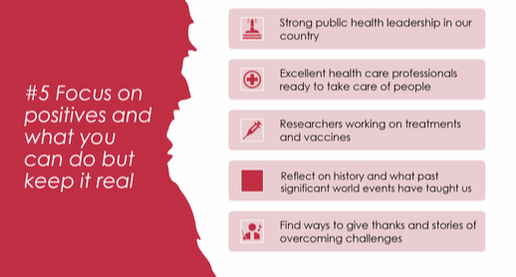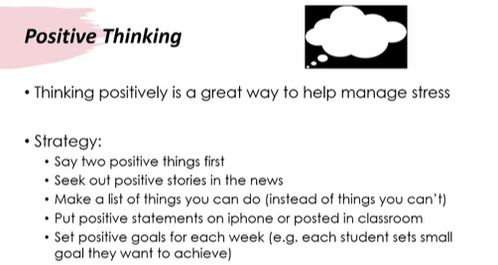|
As women age, the importance of maintaining strength and vitality becomes increasingly evident. While many may associate strength training with bulging muscles and intense workouts, the reality is that it offers many benefits beyond just physical appearance. Women over 40 who incorporate strength training into their fitness routine is a game-changer as it enhances overall health, longevity and quality of life. Here’s what you need to know:
It's important to note that incorporating strength training into a busy schedule doesn't require hours at the gym or fancy machines. Keeping it simple by dedicating just 15 minutes, three times a week, can make a significant difference in reaping the benefits of strength training for women over 40. Women can effectively stimulate muscle growth, boost metabolism, and improve overall health without sacrificing precious time or energy. By focusing on compound movements that engage multiple muscle groups simultaneously, such as squats, upright rows, shoulder presses, resistant bands, with either light weights or bodyweight, women can maximize their workout efficiency and optimize results. It doesn’t have to be expensive and complicated. The key lies in consistency. Prioritize your workouts and train a minimum of three times a week to reap the benefits. Water is the essence of life and staying adequately hydrated is crucial for maintaining good health. The amount of water our bodies require can vary based on factors such as climate, physical activity and individual differences. Let's explore the importance of staying hydrated, how much water you should consume and why your needs may change during exercise, colder months, and warmer months.
The general recommendation for daily water intake is eight 8-ounce glasses, totaling about 2 liters or half a gallon. However, individual requirements can vary. Factors such as age, weight, sex, health status, and activity level play a role in determining your specific needs. Proper hydration through adequate water intake plays a crucial role in maintaining hormonal balance, particularly in women aged 40 and beyond. As women approach and navigate through menopause, hormonal fluctuations become more pronounced, leading to symptoms such as hot flashes, mood swings, and weight gain. Water, as an essential component of various bodily functions, aids in regulating hormone production and distribution. It facilitates the transport of hormones through the bloodstream, supports the liver in metabolizing and eliminating excess hormones, and helps maintain optimal kidney function, contributing to hormonal equilibrium. Additionally, staying well-hydrated can alleviate common menopausal symptoms, such as bloating and fatigue, promoting an overall sense of well-being during this transitional phase of life. As a simple yet powerful element of self-care, prioritizing adequate water consumption can significantly contribute to hormonal harmony and the overall health of women over 40. The Cellular Power of Hydration: Think of water as the ultimate energy drink for your cells. Each cell in your body relies on water to function optimally. When adequately hydrated, cells efficiently carry out essential processes, including nutrient transportation, temperature regulation, and waste elimination. Proper hydration ensures that your cells are operating at peak performance, translating into sustained energy throughout the day. Energizing Your Muscles: Water becomes crucially important in combating muscle fatigue. Dehydration can lead to a decrease in blood volume, making your heart work harder to pump oxygen and nutrients to your muscles. This inefficiency can result in premature fatigue and a feeling of sluggishness. By maintaining proper hydration, you provide your muscles with the fluid they need to function efficiently, enhancing endurance and preventing the onset of fatigue. Hydration and Exercise: When you engage in physical activity, your muscles generate heat, prompting the body to cool down through sweating. As sweat evaporates, it helps regulate your body temperature, but it also leads to fluid loss. Inadequate hydration during exercise can hinder your body's ability to cool down, potentially causing overheating and a decline in performance. By drinking water before, during, and after exercise, you support your body's cooling mechanisms, ensuring that your muscles stay energized and fatigue is kept at bay. Water is not just a beverage; it's the lifeblood that keeps your cells and muscles energized. Prioritize hydration to unlock your body's full potential. By recognizing the connection between water, cellular energy, and muscle performance, you pave the way for a more vibrant, alert, and active lifestyle. So, drink up and let the revitalizing power of water propel you towards your peak performance! Source: CanFitPro Magazine and American Council on Exercise (ACE) In the pursuit of a healthy and balanced diet, the importance of protein cannot be overstated. Renowned nutrition and fitness expert JJ Virgin advocates for a strategic approach to protein consumption, emphasizing the incorporation of 30grams of protein in every meal. This practice has gained popularity for its potential to enhance overall health, support weight management, and optimize muscle function. Why 30 Grams of Protein? JJ Virgin, a prominent health and fitness authority, underscores the significance of consuming an adequate amount of protein with each meal. The 30-gram target is not arbitrary; it aligns with the optimal amount of protein needed to stimulate muscle protein synthesis, promote satiety, and regulate blood sugar levels. Muscle Protein Synthesis: Protein plays a crucial role in the repair and growth of muscle tissues. Consuming 30 grams of protein per meal provides the necessary amino acids to trigger muscle protein synthesis, the process by which the body builds new proteins to maintain and repair muscle mass. This becomes particularly important for individuals engaged in regular physical activity or those looking to enhance their muscle tone. Satiety and Weight Management: One of the key advantages of incorporating 30 grams of protein into each meal is its ability to promote a sense of fullness and satisfaction. Protein-rich foods take longer to digest, helping to curb cravings and reduce overall calorie intake. JJ Virgin emphasizes the role of protein in supporting weight management by preventing overeating and fostering a more sustainable and balanced approach to nutrition. Blood Sugar Regulation: Maintaining stable blood sugar levels is vital for overall health and energy balance. Protein, especially when combined with fiber-rich foods, slows down the absorption of glucose, preventing rapid spikes and crashes in blood sugar. This can be particularly beneficial for individuals with insulin resistance or those aiming to manage their weight effectively. Tips for Achieving the 30-Gram Goal:
Achieving 30 grams of protein in every meal can be both delicious and diverse. Here are some examples of protein-rich foods that you can incorporate into your meals: Breakfast: Greek Yogurt Parfait: 1 cup of Greek yogurt (15-20g protein) 1/2 cup of granola (5g protein) Handful of almonds or walnuts (5g protein) Omelette: 3 large eggs (18g protein) 1/2 cup of cooked spinach (3g protein) 2 oz. of smoked salmon (9g protein) Lunch: Grilled Chicken Salad: 6 oz. grilled chicken breast (40g protein) Mixed greens and veggies (2-5g protein) 1/4 cup of feta cheese (6g protein) Quinoa Bowl: 1 cup of cooked quinoa (8g protein) 1 cup of black beans (15g protein) 1/2 cup of diced tofu or grilled chicken (15g protein) Mixed veggies (2-5g protein) Dinner: Salmon with Sweet Potato: 6 oz. baked or grilled salmon (30g protein) 1 large sweet potato (4g protein) Steamed broccoli (3g protein) Vegetarian Stir-Fry: 1 cup of firm tofu (20g protein) Stir-fried vegetables (broccoli, bell peppers, snap peas, etc.) (5-10g protein) 1 cup of cooked brown rice (5g protein) Snacks: Cottage Cheese and Fruit: 1 cup of low-fat cottage cheese (28g protein) Fresh pineapple or berries (2g protein) Protein Smoothie: 1 scoop of protein powder (20-25g protein) 1 cup of almond milk (1g protein) 1 tablespoon of almond butter (3g protein) 1/2 banana (1g protein) Vegan options: Breakfast: Vegan Protein Smoothie: 1 scoop of pea protein powder (20g protein) 1 cup of almond milk (1g protein) 1 tablespoon of almond butter (3g protein) 1/2 cup of berries (1g protein) Chia seeds or hemp seeds (5g protein) Tofu Scramble: 1 cup of firm tofu, scrambled (20g protein) Spinach and tomato sautéed in olive oil (5g protein) 1 slice of whole-grain toast (5g protein) Lunch: Lentil and Chickpea Salad: 1 cup of cooked lentils (18g protein) 1/2 cup of chickpeas (7g protein) Mixed greens, cucumber, and tomatoes (5g protein) Tahini dressing (2g protein) Quinoa and Black Bean Bowl: 1 cup of cooked quinoa (8g protein) 1 cup of black beans (15g protein) Avocado slices and salsa (5g protein) Lime wedge for flavor Dinner: Chickpea and Vegetable Stir-Fry: 1 cup of chickpeas (15g protein) Mixed stir-fried veggies (broccoli, bell peppers, snap peas, etc.) (10g protein) 1 cup of cooked brown rice (5g protein) Teriyaki or soy sauce for seasoning Vegan Lentil Curry: 1 cup of cooked lentils (18g protein) Coconut milk and tomato-based curry sauce Served over quinoa or brown rice (10g protein) Fresh cilantro for garnish Snacks: Edamame and Almonds: 1 cup of edamame beans (17g protein) Handful of almonds (6g protein) Hummus and Veggies: 1/2 cup of hummus (8g protein) Carrot and cucumber sticks (2-3g protein) Tips for Success: Combine Protein Sources: To ensure a well-rounded amino acid profile, mix different protein sources throughout the day, such as beans, lentils, tofu, and grains. Explore Plant-Based Protein Products: There are various plant-based protein products available, including pea protein powder, soy products, and seitan, that can contribute significantly to your protein intake. Read Labels: Check product labels for protein content, especially in plant-based alternatives like vegan burgers, sausages, and dairy substitutes. Remember to tailor your meals to your individual nutritional needs and consult with a registered dietitian or nutritionist for personalized advice. Gratitude is a feeling we’re reading a lot about at the moment. It’s on all social media posts, podcasts, and how we end our fitness classes. It turns out that gratitude is connected to all kinds of things, including our happiness and optimism. Gratitude is a feeling that lessens stress and enhances overall health.
But I want to focus on a different, deeper kind of gratitude. I'm not talking about the the 'thank yous', or the cards, or the talk. This is not the gratitude where I get something and now I show that I'm thankful. There’s a deeper gratitude that I want to speak of. The Oxford Dictionary defines gratitude as seeking "to return kindness". Gratitude wants to complete the circle, it wants to give back. The kind of gratitude I am talking about does not in fact need words although, paradoxically, it is often found within conversation. It is the gratitude that is naturally emitted right in the midst of a meaningful relationship. It is the gratitude that is so obviously transparent when you are with someone who wants to be in your company, who is so clearly listening to everything you say, whose expressions leave nothing other than the realization that they are delighted to be with you. My mother is one of the most grateful people I know. She is fighting a horrible battle of pancreatic cancer. She is a simple women who was raised on a farm in Italy and began working in the fields at the age of 8 taking care of the animals and her younger siblings. Her deep desire was to become a nun and serve God but her parents had other plans for her. She is a fierce woman who married a charming young man, my deceased father, and together they moved to Canada with no money and not speaking a word of English. They lived a simple happy life and raised 3 daughters, me being the youngest. They had just enough money to splurge on KFC take-off once a month and we looked forward to that meal every month. My father passed away at the age the young age 50 leaving my mother scared and confused on how to write a cheque and pay a bill at the bank. Fairness and good fortune were not her experience of life; rather, she faced a hard life with much loss and sadness. She never had money to spare and hers was a simple life as a result. But I never met a more grateful person in my life. Have you ever been in a conversation in which the person is really listening to every word you are saying? That they’re not formulating in their head what to say next or turn the conversation back on them? How special do you feel when you are truly being heard. It’s an absolutely brilliant feeling! I’m the youngest in the family and gave my mother the most difficult time never wanting to conform to the norm but when entered the room, there was never any doubt that she was grateful for me, not just grateful for something I had done or something I had given her, but for me. Her gratitude for me came without judgment or expectation. Her gratitude in just being connected to me. Next time your child, spouse or friend enters the room, give gratitude for their presence and not as an attached to something. We are grateful for how well our children are doing at school, in sports, in music and we should but remember the deeper gratitude of pure joy of sitting without judgement or expectation and just listening to someone. Gratitude helps us accept their imperfections and their limitations. As we enter the holiday season, look towards gratitude, that deep gratitude. It is in gratitude that we realize we are blessed; it is there that we connect and it is there that our relationships grow. Be not selfish, but selfless. Give in the spirit of love, Through caring actions and good works. There's no doubt that our community members, family and friends have gone through unbelievable changes in the past 8 months dealing with uncertainty. We did not train for this pandemic like we would have for a marathon yet this rapid change has taught us the importance of self-care. Here are a few tips and strategies to help you support yourself and those you love by Dr. Bagnell Strategy #1: Prioritize Self Care What do you need to do to take care of yourself? Regular activity and staying connected to people who are important. Find a division between work life and home life. A pandemic can wreck havoc of your sleep. Help cope with stress by getting a good nights rest, eating well, finding time to relax and adding physical activity to your self care routine. What are you going to do? Strategy #2: Be Mindful When you notice your mind going forward or worrying, use the STOP technique. Stop. Take a Breath. Observe and accept the thought. Proceed with picking 5 things you see, feel and hear. This brings sensory information to the brain and helps calm your brain down. Mindfulness in the moment strategies help be in the present moment. Strategy #3: Routine and Communication Set up a normal routine as much as possible. Over-communicate during times we are stressed as we remember less especially if we’re more isolated. Strategy #4: Emotions - Validation & Encouragement People will have a wide range of emotions during this pandemic and every emotion is valid. Be patient, show compassion, kindness and encouragement. Strategy #5: Focus on positives and what you can do to keep it real When we’re tired we focus more on the negative. Focus on the positive AND keep it real. What do you know? Example: our country is doing well; we have a strong support system; we have great healthcare. Empower your loved ones to find positives in this and giving thanks. Strategy #6: Positive Thinking We go right to the negative so try to think of 2 positives. Set a new tradition/routine with family and say 2 positive things first when you arrive home from work, during dinner or before bed. Set positive goals for each week but be sure not a big goals. Small is better right now . Strategy #7: Let go of the things you can't control It's exhausting to focus on what you can’t control. Stay on the inside of the circle where you have control. Limit your media use especially following links which leads you down a rabbit hole. Try removing all social media apps from your phone so that you limit your use. Strategy #8: Stay Connected We are social beings and need to be connected. Build them into your life and be creative with the activities you do. Strategy #9: Use Humour
It's a great brain stress reducer! Tips from CanFitPro Website
With the constant demands on our time & responsibilities, it can be easy to neglect our health, making excuses that there isn’t enough time to eat right, exercise, or take breaks. But by not prioritizing your health, you perpetuate the problem and continue to lack the energy needed to find balance & happiness. Here are 5 ways to get back on track for 2020 1. MAKE EXERCISE A PRIORITY Whether that is through a structured routine or just through moving more throughout the day. Choose healthy food options by focusing on eating whole, real foods, not processed, convenience foods. And remember to take breaks every hour or so to stretch, adjust your posture, take some deep breaths, or take a short walk. 2. AVOID THE NEGATIVITY Stop beating yourself up! Falling off track doesn’t mean there’s anything wrong with you or that you lack willpower, it means you’re human that's making positive changes & that's something to be proud. Talk to yourself as you would to a family member. Never feel guilty or ashamed for trying. 3. REALIZE YOU’RE NOT STARTING BACK AT SQUARE ONE One of the most demoralizing parts of getting back on track is thinking that you’ve lost all your progress and have to start back at square one. This isn't true. When you miss a few workouts, you will begin to lose some strength, muscle mass, and aerobic endurance. But when you start back up again, you’ll make progress faster because your body will be ready. 4. SEE EACH SLIP-UP AS AN OPPORTUNITY TO LEARN Framing your failures as learning opportunities is a great way to feel better & get better. Instead of dwelling on the fact that something went wrong, figure what exactly went wrong and why. Sometimes it’s an obvious thing, like you got sick or injured and fell out of the habit. But sometimes it’s not so obvious and it’s worth thinking about to figure out if there’s something you could do differently next time. Maybe that means readjusting your goals to make them more realistic. Perhaps it’s about finding ways to make getting active more convenient and take up less time. It will depend on your situation and what you’re trying to accomplish, but think about it, and develop strategies that work for you. 5. FIND WAYS TO MAKE IT MORE SUSTAINABLE Though our specific goals vary, in general, we’re all hoping to make change last. Try to keep that in mind when you start again by using practical tips like:
A HELPFUL WAY TO THINK ABOUT IT Often the worst part of getting back on track is feeling like we have to walk back to the starting line. It can end up feeling like we’re getting farther and farther away from our goals. Like we’re taking one step forward and two steps back. A good way to avoid this trap is to picture yourself picking up the starting line and bringing it with you. There’s no doubt that at some point or another, you’re going to drop it or get tired and have to set it down—that’s part of trying, part of being human, part of the process. But if you pick up the starting line, there’s no need to make the sad walk back to the beginning. When you build up the motivation to start again, you won’t be starting over, you’ll be starting right back where you left off, continuing on your path toward your goals. Pick up the starting line and bring it with you, push the starting line closer and closer to your goal, and each time you start again you'll be that much closer to reaching the finish line. Brene Brown, a researcher on courage, vulnerability, shame, and empathy talks about having a strong back, soft front, and wild heart. Life is full of challenges and whatever you fight, you strengthen. Whatever you resist, you persist. The same holds true when exercise. The more you challenge your body, the stronger you become mentally and physically. Being able to find the strength to stand up after we are knocked down is very difficult but essential. Being resilient is a skill that we must exercise just like strengthening our muscles; we need to strengthen our mind. Brené Brown describes this as having a Strong Back – the ability to bear your load and still move forward. Soft Front is our front that faces people. There is overwhelming evidence that our tone, manner, and ability to relate to others has one of the most profound impacts on how we will succeed. Newton’s Third Law of Motion which Oprah explains as one of the most important laws of physics and in life: "For every action, there is an equal and opposite reaction.” Everything we do physically, emotionally, financially and spiritually, “the energy you’re putting out right now is coming back to you all the time whether you recognize it or not.”
If you find yourself surrounded by negative people in your life, take a look at the energy you’re putting out there. People are drawn to positive people. Positive people thrive, positive people are less likely to be critics and more likely to be encouragers, positive people develop high levels of emotional intelligence and empathy allowing them to demonstrate a ‘soft front’ in the face of intense and difficult situations. Positive people are more likely to focus on wellness which, of course, adds to their own sense of positivity. Positive people have the ability to cultivate the potential in others. Don’t be afraid to be brave and vulnerable. Put it all out there and don’t leave anything on the floor. The price is high but the rewards are great. We are just over a month into the Fall season and it’s easy to notice the change in the air. Mornings are
crisp, evenings are cool, and the beautiful colours that surround us are a reminder of how amazing nature truly is. There is something truly special about this time of the year. We are also invited to also see this season as an opportunity to check in with ourselves. The holidays will be here in just a few weeks and before we get into the busy-ness of everything that the month of December brings, we have this window of time to really consider our health and wellness. For some, the Holidays bring on feelings of love, family, companionship, and joy. For others however, the experience is of overwhelm, loneliness and sadness. Wherever we are in the spectrum, there are some good habits we can establish to help us along the way. Starting the day with meditation and/or reflection. Whether you have an extra 30 minutes and an extra 2 minutes, you can do this. Yes, mornings can be hectic but there is so much value in allocating time to just being. You can use this time to express gratitude, to visualize your goals for the day, or to just breathe. You don’t need special clothes, extra equipment, or even a guide. You just need to set some time, set a timer (if you wish), and start. Get outside. Yes, this is also a good habit. Step away from your desk or your home for even 5 minutes aday. Walking to your car even counts – as long as you take a moment to breathe in that fresh air or to feel the gentle wind on your face. We often hear the phrase “kids don’t play outside anymore”. Guess what? Many adults don’t either. The same benefits apply to us. We all need some fresh air daily. Set a bedtime routine. This one also isn’t just for kids. Our brains are overstimulated throughout the day and we then wonder why we can’t sleep soundly at night. We need to give our minds, bodies, and spiritsan opportunity to wind-down. This could mean taking a warm bath, getting into comfy pajamas, doingsome restorative yoga, etc. It could also mean no TV/cellphone/tablet for 30 minutes before bed. Seems shocking right? Try it for a week and see how you feel. Each of these habits can be easy or difficult to maintain. The choice is really ours. Will we make time for wellness or will we make time for illness? You have a community cheering you on. Let us know how you are doing and reach out to share your experiences on our private Facebook page. Have a wellness tip you want to share? Post it as well! Your suggestion might just be exactly what someone else needs in order to Fall in love with their lives. October is an excellent time to reassess your mental health. As we move toward lower temperatures and shorter days, take some time to check in with yourself.
How are you feeling? What’s your energy like? How are your moods these days? Use this Mental Health Meter from the Canadian Mental Health Association to see how you’re faring on characteristics that make up good mental health. This Fall, consider implementing a few small changes to your daily routine to support your mental health. Click here to read more. FIVE TIPS FOR YOUR MENTAL HEALTH (Science of Happiness article) 1. BE PRESENT BY COMMITTING TO LESS SCREEN TIME. Real life is happening right now. We are missing more and more moments of real-life engagement with ourselves and others by constantly being distracted and tethered to a phone. Make a choice to be present. Dedicate some time at least once a week to being phone-free. Try turning your phone off from 5pm Friday till noon on Saturday and take advantage of that time to be entirely present with your friends, family, partner or yourself. You’re not missing anything online, you’re missing out on real life. 2. GET OUT AND SOCIALIZE! Don’t let yourself prematurely hibernate. Call that friend to reconnect over a coffee and a walk. It’s not winter yet, so don’t let a chilly day deter you – dress appropriately (layers are key!). Wondering what to talk about? See tip #3. 3. GET INSPIRED! Plan your winter getaway. Imagine yourself snowshoeing in the mountains or walking along a sandy beach. Where do you want to explore? What do you want to do? Planning a trip gives you something to look forward to and acts as excellent motivation to get moving now, so you can be happy, strong and energized for your adventures! 4. GET A GOOD SLEEP! Sleep is critical to our moods—aiming for 7-8 hours per night is best. Are you feeling well-rested? If not, try to start your nighttime routine earlier by turning off screens (tip #1!) and cue your mind to relax by reading a book, listening to music or taking a bath. Can’t sleep because you have a busy mind that just won’t slow down? See tip #5. 5. GET MOVING! Movement clears the head. Think about movement as a tool to flush away stress and anxiety. Getting your heart rate up releases feel-good endorphins. Start small, with little bits of movement built into your day. Walk 15 minutes by getting off public transit a few stops earlier. Take the stairs at work. Add a 20-minute lunch break walk outside to your daily routine (even connect with a pal, tip #2!)—it will do wonders for your mental health. |
Linda RaponiPTS, FIS, NWS, RYT200 Archives
February 2024
Categories |
Proudly powered by Weebly










 RSS Feed
RSS Feed